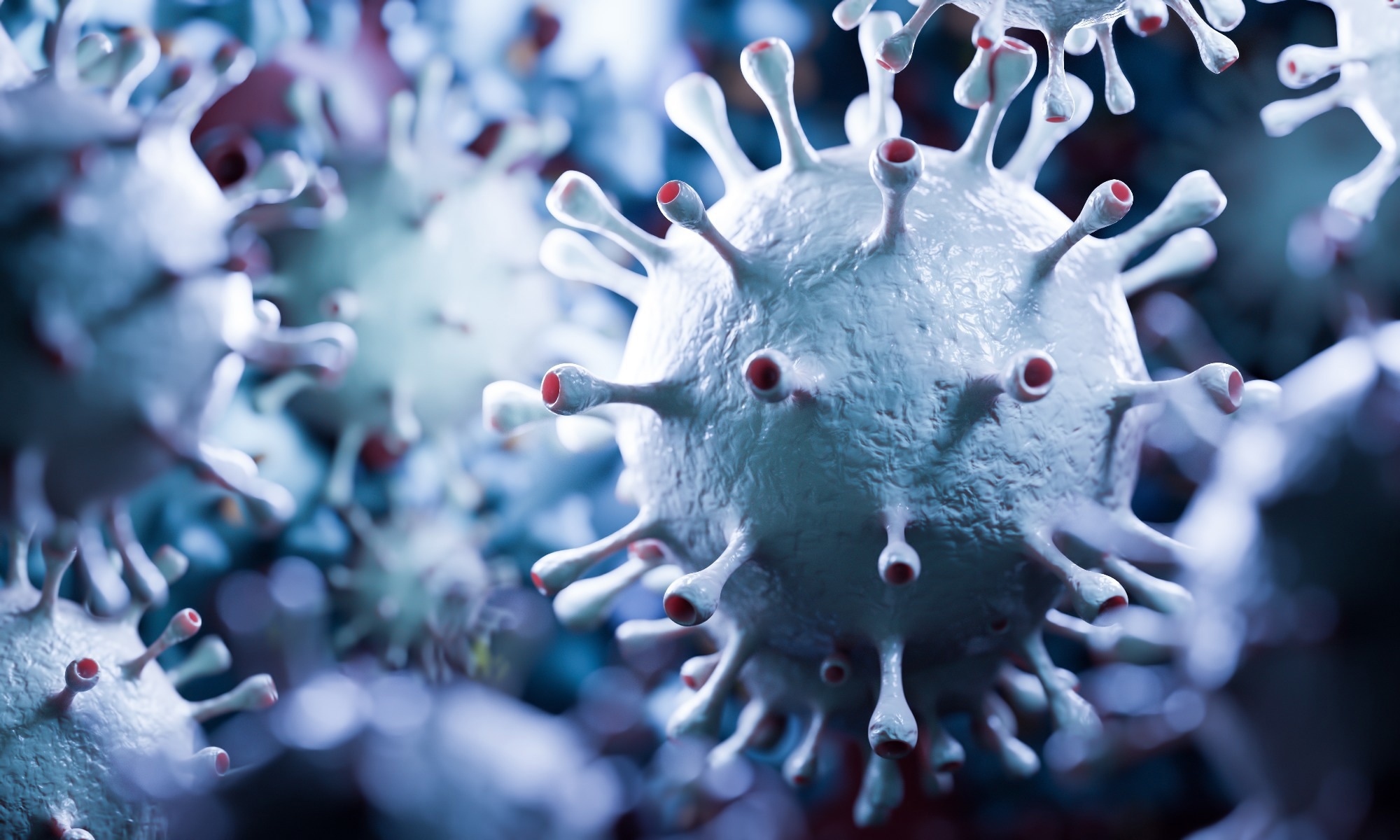In a recent study posted to the bioRxiv* preprint server, researchers investigated severe acute respiratory syndrome coronavirus 2 (SARS-CoV-2) envelope (E) protein activity in terms of calcium cations (Ca2+) cations.
 Study: The SARS-CoV-2 envelope (E) protein forms a calcium- and voltage-activated calcium channel. Image Credit: PHOTOCREO Michal Bednarek/Shutterstock
Study: The SARS-CoV-2 envelope (E) protein forms a calcium- and voltage-activated calcium channel. Image Credit: PHOTOCREO Michal Bednarek/Shutterstock

 *Important notice: bioRxiv publishes preliminary scientific reports that are not peer-reviewed and, therefore, should not be regarded as conclusive, guide clinical practice/health-related behavior, or treated as established information.
*Important notice: bioRxiv publishes preliminary scientific reports that are not peer-reviewed and, therefore, should not be regarded as conclusive, guide clinical practice/health-related behavior, or treated as established information.
Functional ion channels are critical in the infectious cycles of several viruses since viruses modify host ionic balance (especially Ca2+) to facilitate their uptake, maturation, and export. Viroporins encoded in viral genomes are essential for altering ionic and cellular homeostasis. SARS-CoV-2 E forms ion channels in the endoplasmic reticulum (ER)-Golgi intermediate compartment (ERGIC) membranes in association with SARS-CoV-2 virulence and progression of infection.
Studies have reported that blockade, deletion, or loss-of-function mutations in CoV E proteins can generate attenuated or propagation-lacking viral variants; however, precise physiological functions of SARS-CoV-2 E are not well-characterized and require further investigations.
About the study
In the present study, researchers explored the prime physiological function of SARS-CoV-2 E upon viral infection.
E protein construct comprising the full-length E sequence or residues 1 to 75 (EFL) was produced, purified from E. coli inclusion bodies, and reconstituted into phosphatidylethanolamine (PE) membranes under voltage-clamp conditions. EFL oligomers were formed and confirmed by Western blot analysis and mass photometry (MP).
Molecular dynamic (MD) simulations were performed, and voltage-clamp electrophysiological measurements were recorded to quantify Ca2+ channel activity. The membrane-bound structure and functional ion channel activities of SARS-CoV-2 E were investigated. EFL pentamerization was performed and confirmed by size exclusion chromatography coupled with multi-angle light scattering (SEC-MALS) analysis.
In addition, the effects of post-translational modifications (PTM) on the E protein function were explored by palmitoylating all the cysteine residues (Cys40, Cys43, Cys44) in every subunit in the EFL pentamers of SARS-CoV-2 E protein channels. Further, the effects of luminal Ca2+ concentrations on EFL gating properties were evaluated.
The team investigated if the transmembrane (TM) site formed EFL functional substructures, for which ETM was produced comprising viral E protein residues 8 to 38, by solid-phase peptide synthesis and assessed ETM functionality in-vitro. The team investigated whether ETM was inserted into PE planar lipid bilayers under voltage-clamp conditions and performed MD simulations on ETM domains in the assembled pentamers.
Results
SARS-CoV-2 E formed Ca2+-permeable ion channels in the planar lipid bilayers, which depended on hydrophobic gating and lipids. The viral E protein exhibited a binding annulus for Ca2+ ions at the entrance of the luminal pores that stabilized the pores in open states. As a result, calcium cations increased open durations of the pores and ionic currents passing through the E protein ion channels.
The hydrophobically gated ion channel activity of the viral E protein and viroporins were regulated by elevated luminal Ca2+ concentrations (0.1 mM to 1.0 mM), electrochemical gradients, pH, PTMs, ERGIC phospholipids with negative charges, and voltage applied to the membranes. Palmitoylation of ≥1 cysteine residue promoted the formation of open and stable E protein pores. Ca2+ ions activated ER-luminal channels and maintained the pores in the open state.
Ca2+-Glutamic residue interactions altered E protein conformation and favored ion channel opening and the flow of ions into and through the channels. The distinctive calcium-binding site in the E channels served as a recruitment region for ions and an activation site in the pores. SEC-MALS and MP analysis findings showed that EFL pentamers were the prevailing states of the E protein construct. The E protein showed cation selectivity over anions, with Cl- permeability one-third of Na+ permeability.
By using Ca2+ as the permeant cation, the team observed multiple channel incorporation and frequent but brief open events to several open states and higher permeability of viroporin to Na+ than Ca2+ ions. The voltage experiments showed that the E protein was most likely a voltage-gated pore regulated by electrowetting and a hydrophobic gating motif (comprising Phe20, 23, and 26 residues) located in the pore’s center.
The TM domain, individually, did not form physiologically functional substructures of the viral E protein. Therefore, the domain constructs may not be appropriate models to gain insights into the viral E protein function and structure for developing anti-SARS-CoV-2 drugs. Ca2+ release via the viral E protein pore depended strongly on Ca2+ loads and Ca2+ store depletion below threshold or the positive ion binding region modulation could abolish SARS-CoV-2 E-mediated Ca2+ flux. The finding is critical, given evidence of calcium ion dysregulation in cells in coronavirus disease 2019 (COVID-19).
Overall, the study findings highlighted the physiological role of SARS-CoV-2 E involving Ca2+ release from the ER and that the distinctive Ca2+ activation region could be potentially targeted for the development of anti-CoV agents based on ion channel blockage mechanisms. The findings highlighted novel ion and lipid interaction sites on SARS-CoV-2 E that could be targeted for developing anti-SARS-CoV-2 drugs, potentially preventing fatal excess stimulation of host immune responses and addressing the least amino acid substitution-prone part of the SARS-CoV-2 proteome.

 *Important notice: bioRxiv publishes preliminary scientific reports that are not peer-reviewed and, therefore, should not be regarded as conclusive, guide clinical practice/health-related behavior, or treated as established information.
*Important notice: bioRxiv publishes preliminary scientific reports that are not peer-reviewed and, therefore, should not be regarded as conclusive, guide clinical practice/health-related behavior, or treated as established information.